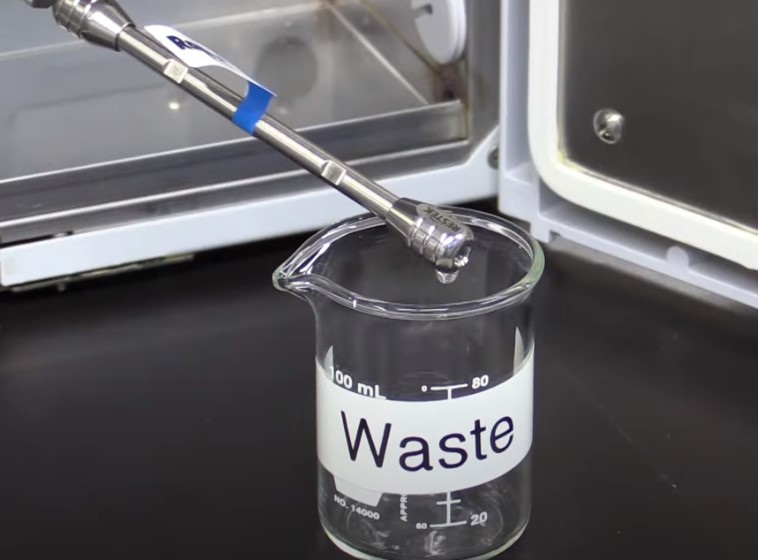Column Cleaning, Regeneration, and Storage of Silica Based Columns are necessary to prevent unnecessary problems during the Process.

So when you’re using those in-line filters or guard cartridges for your HPLC columns, it’s like giving them armor against getting clogged or stuff sticking to them. But you know what? Even with these guard things, over time, those columns might still get a bit dirty from some stubborn sample bits sticking around. You can tell when this happens because the pressure in the column starts going up slowly, or sometimes, it shoots up suddenly. You might also notice the column not working as well as before, with the peaks in your results not looking as sharp or splitting up.
The protection of UHPLC columns is also recommended and guard cartridges should be used where available. Guard cartridges capable of withstanding the high pressures required are not available for all manufacturer’s UHPLC columns. In these cases, it is advisable to use a precolumn filter which can operate at high pressures.
In order to maximize column lifetime, particularly with UHPLC columns, the following tips should be considered:
- Use only ultra-pure UHPLC/HPLC grade solvents
- Use freshly prepared aqueous mobile phases to discourage bacterial growth
- Filter all samples, standards, and mobile phases (eg. 0.2μm filter)
- Use an in-line filter system
- Perform sample clean-up on dirty samples
Please note that in cases of irreversible compound adsorption or column voiding, it may not be possible to regenerate the column.
Column Flushing
If a deterioration in column performance or an increase in back pressure is observed, then a column cleaning or regeneration procedure can be undertaken, using a series of stronger solvent combinations. It is strongly advised to read the Care and Use’ instructions provided by the
manufacturer before commencing this procedure.
While the majority of spherical 3,5 and 10μm particle size columns can be reverse flushed or even used in the reverse direction, some 3μm columns can only be reverse flushed for a short time and should not be used in the reverse direction afterward. For irregular particle columns, it is advisable to flush in the normal direction of flow.
For UHPLC (<2ym) columns, the manufacturer’s “Care and Use’ instructions must be consulted before considering reverse flushing the column. In some cases, it may be preferable to flush the UHPLC column in the normal direction of flow.
It is recommended that the column efficiency is measured before and after any clean-up procedure or long-term storage, using either the column test conditions given on the manufacturer’s test chromatogram or conditions from the method being followed. This enables the effectiveness of any cleaning procedure to be monitored.
Column Cleaning Procedures
The following general procedures are recommended for the regeneration of column performance.
- Disconnect and if applicable reverse the column.
- Connect the column to the pump, but not the detector.
- Follow the appropriate flushing procedure for the type of column, using 10-20 column volumes of each solvent (see table below). Always make sure that the last solvent used will be compatible with the mobile phase.
- The flow rate should not exceed that specified on the OC chromatogram for the particular column but preferably should be maintained at 23-50% of the normal working flow rate.
Read Also: Various Types of HPLC Columns
Flushing Procedures for Various Types of Columns
Reversed-phase columns: (eg. C18, C8, C4, Phenyl, CN, ‘AQ’ type)
- Mobile phase without buffer
- Methanol
- Acetonitrile
- Acetonitrile TPA (75:25)
- IPA
- Dichloromethane
- Hexane
In many cases, the sequence from 01 to 05 may be sufficient. If step 06 or 07 is necessary, flush with IPA before returning to the mobile phase.
If metal ions are thought to be causing contamination, flush with aqueous 0.05M EDTA followed by water.
Columns that have been used with ion-pairing reagents are best dedicated to that method and kept for this purpose.
Bonded normal-phase columns: (CN, NH2, Diol)
a) Chloroform
b) IPA
c) Methylene chloride
d) Hexane
Anion-exchange columns: (SAX, WAX)
a) Water
b) Methanol
c) Chloroform
d) Methanol
e) Water
Reversed-phase columns used for protein/peptide analysis
a) Mobile phase without buffer
b) Gradient of 10 – 90% B
where
A=0.1% TFA in water
B = 0.1% TFA in acetonitrile
Cation-exchange columns: (SCX, WCX)
a) Water (inject 4x 2001 DMSO during flush)
b) Tetrahydrofuran
Unbonded silica columns: (SIL)
a) IPA
b) Methanol
c) Ethyl acetate
Size exclusion columns for proteins
For weakly retained proteins
a) 0.1M phosphate buffer, pH 3
For strongly retained proteins
a) Gradient of 100% water to 100% acetonitrile over 60 minutes
Storage conditions for silica-based HPLC columns
The conditions under which a column is stored will affect its lifetime. All buffers, salts, and ion-pairing reagents should be flushed from the column before storage. Ideally, the storage solvent should be as shown on the initial column test chromatogram provided by the manufacturer. Column end plugs should be fitted to prevent solvent evaporation and the subsequent drying out of the packing bed.

Naresh Bhakar is the Founder and Author at Pharmaguddu.com, bringing his extensive expertise in the field of pharmaceuticals to readers worldwide. He has experience in Pharma manufacturing and has worked with top Pharmaceuticals. He has rich knowledge and provides valuable insights and data through his articles and content on Pharmaguddu.com. For further inquiries or collaborations, please don’t hesitate to reach out via email at [email protected].
